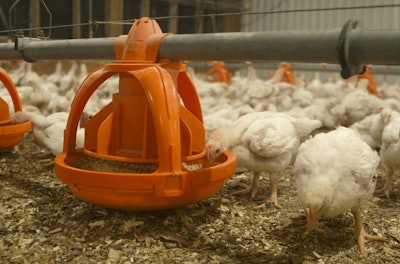
Maple Leaf Foods’ poultry operations were not as profitable as they could have been during the most recent fiscal quarter because of an imbalance between the chicken supply and demand, Curtis Frank, the company’s CEO said.
However, he is confident that the situation will improve this summer.
Speaking during a quarterly earnings call on February 22, Frank acknowledged that some of the raised without antibiotics (RWA) chicken produced by Maple Leaf Foods was recently sold at a price lower than the premium that RWA chicken would normally be sold because of the supply and demand dynamics.
“Poultry is supply managed in Canada, and the allocations on how much is grown is reset every eight weeks, so there’s an opportunity every eight weeks to look at supply-demand balance in the Canadian supply management system, which is good for us over the long term. It gives us lots of stability. It’s one of the reasons we’re very confident in the investment in (the company’s new poultry plant in London, Ontario),” Frank said.
But from time to time, supply of and demand for poultry gets disconnected, like in all commodity situations, Frank said. But when that disconnect happens, he said, “it tends to be more short-lived because supply and demand are reset every eight weeks.”
“We’re currently in a situation where with lots of inflation, the supply setting is out ahead a little bit from the demand created in the market. And what happens in those situations … is things like RWA might not end up in a tray pack. That tray headed to a retailer might end up in an industrial channel, and that has a negative margin impact on the short terms,” Frank said.
Frank was optimistic the consumer demand environment will improve, and the situation will also be better because he said supply allocations for June should bring the supply and demand back into balance.
“We’re frustrated it’s not faster, just for absolute clarity. We’re going to do everything we can commercially between now and the May-June time period to optimize the value of the meat. That’s our job and that’s what we intend to do,” he said.


















